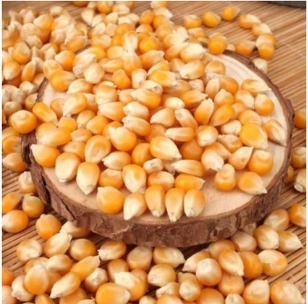Yellow corn, also known as sweet corn or maize, is a type of corn characterized by its yellow-colored kernels and sweet taste. It is a popular crop and staple food in many parts of the world, particularly in North and South America. Here are some key points about yellow corn: Appearance and Taste: Yellow corn has bright yellow kernels that are plump and sweet. The kernels are arranged in rows on a cob, which is covered by husks. When cooked, the kernels become tender and have a mildly sweet flavor, making it a delicious addition to various dishes. Culinary Uses: Yellow corn can be enjoyed in a variety of ways. It can be boiled, steamed, grilled, or roasted and served as a side dish or incorporated into salads, soups, stews, and casseroles. It is a popular ingredient in dishes like cornbread, corn fritters, and corn salsa. In some cultures, yellow corn is used to make tortillas and cornmeal for baking. Nutritional Value: Yellow corn is a nutritious grain. It contains essential nutrients such as dietary fiber, vitamins (including vitamin C, thiamin, and folate), minerals (such as potassium and magnesium), and antioxidants. However, it is worth noting that the nutritional composition may vary depending on the variety and cooking method. Varieties: There are different varieties of yellow corn, including field corn, sweet corn, and popcorn. Field corn is typically used for animal feed and industrial purposes, Yellow Corn Supplier in West Bengal, while sweet corn is the variety consumed by humans due to its sweeter taste. Popcorn, as the name suggests, is a specific type of corn that pops when heated. Harvesting and Storage: Yellow corn is usually harvested when the kernels are plump and the husks have dried out and turned brown. To enjoy the best flavor and texture, it is ideal to consume fresh corn soon after harvest. If storing corn, it is recommended to keep it in the refrigerator with the husks intact for a few days, as exposure to air can cause the corn to lose its sweetness.
Enquiry Now


